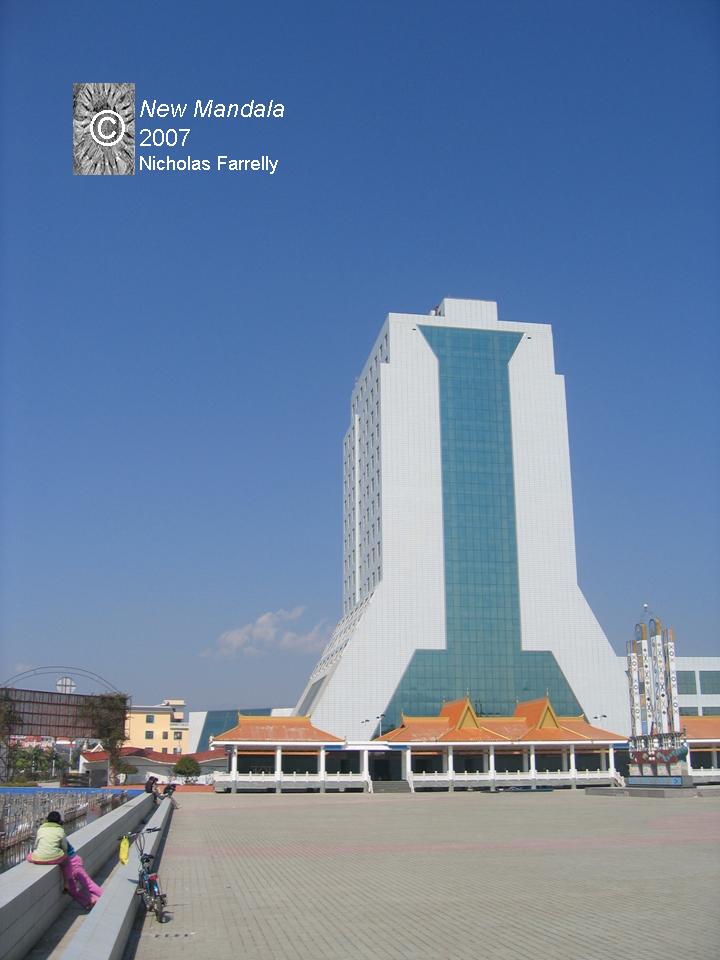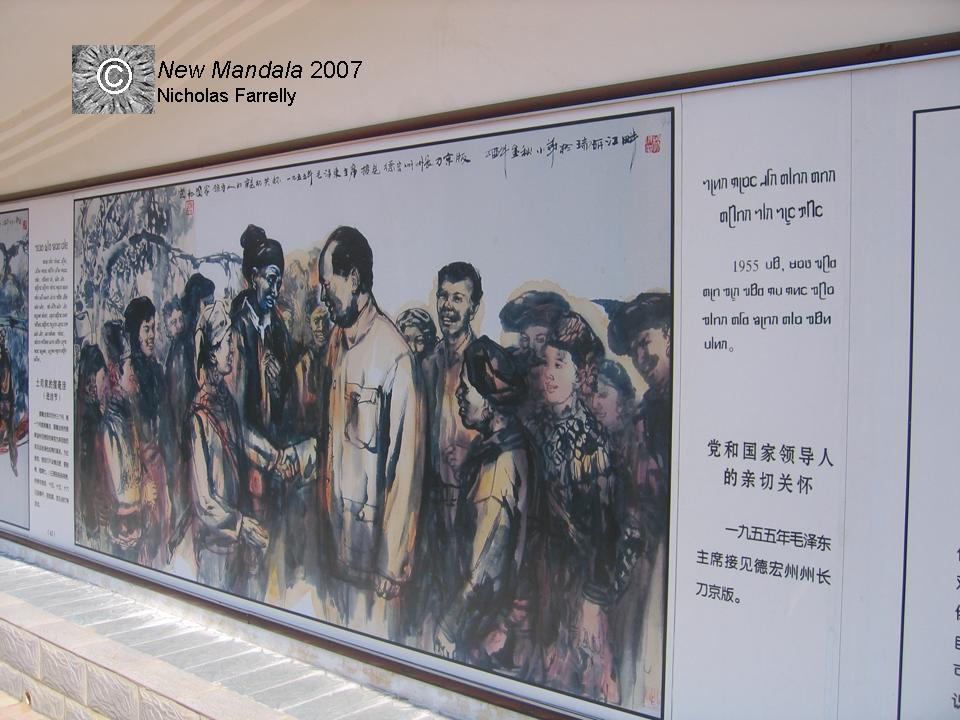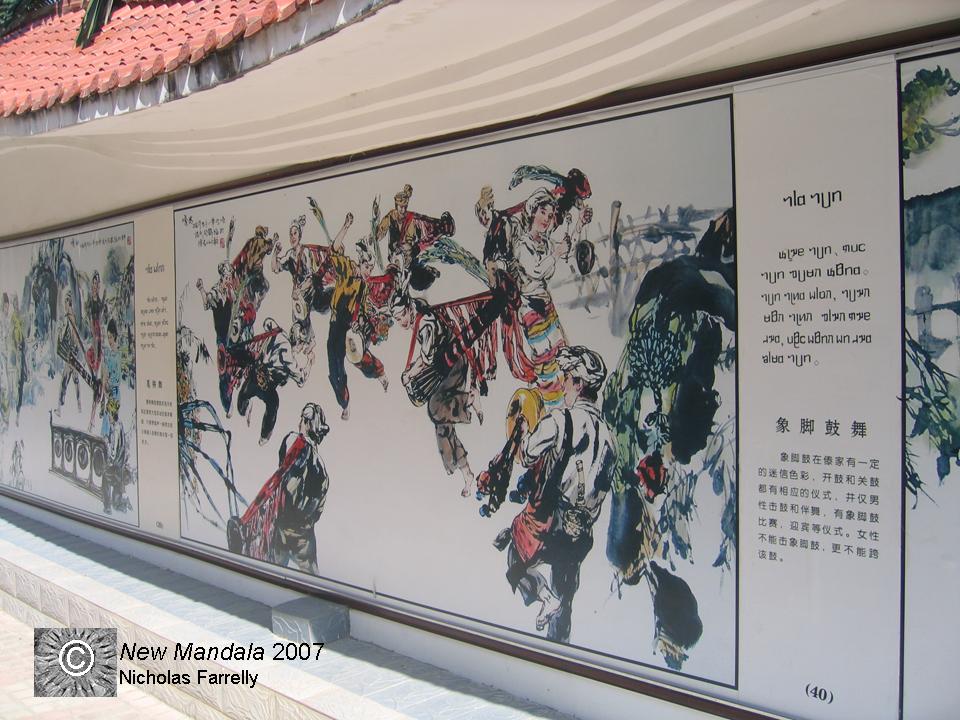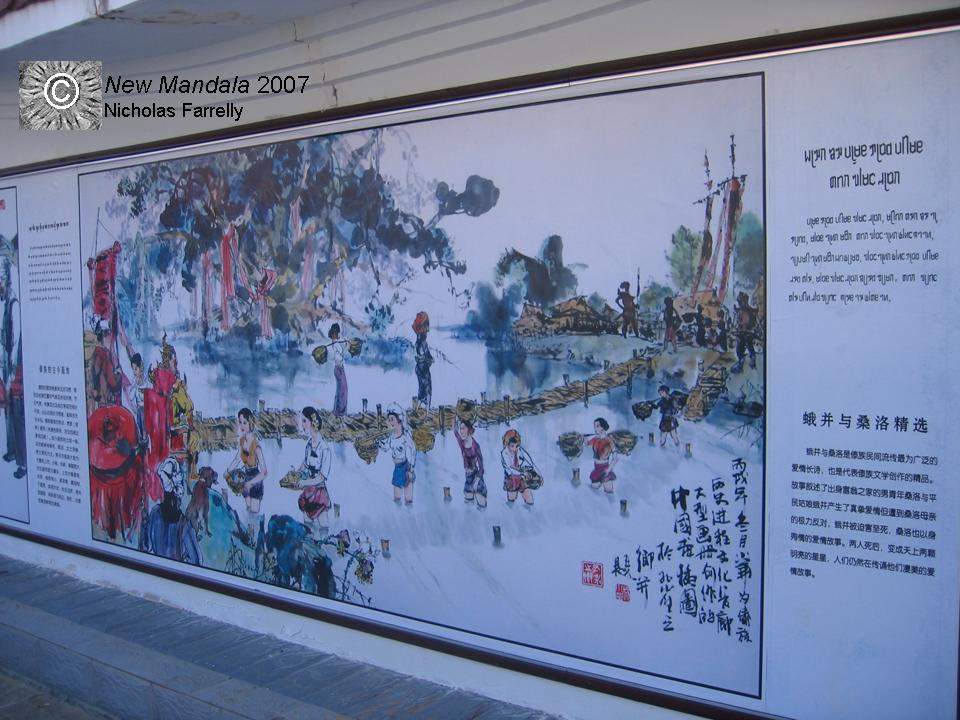Last week I posted about the Sino-Thai “tree of friendship” planted by Thailand’s Princess Maha Chakri Sirindhorn in the Yunnanese border town of Jie Gao. That tree is part of a large Dai-Jingpo cultural park that is situated a few hundred metres back from the Sino-Burmese frontier.
Today, I follow that initial post about the cultural park with a selection of pictures of the murals that adorn its outer walls. I only managed to photograph some of the many images that have been painted around the park – in total there must be well over a hundred different scenes. Their subject matter includes traditional dances, agricultural practices, Chinese politics, historical events and village life.
Some of the images carry bilingual text – in Chinese and Dai. Linguist extraordinaire, Silas Xu, has helpfully provided translations for some of the relevant pictures. His expertise is greatly appreciated.
Image 1
The text reads:
“The Party and Government Leaders’ Affectionate Care. Chairman Mao meets the chairman of Dehong autonomous prefecture, Dao Jingban, in 1955.”
Image 2
The text reads:
“Elephant feet drum dance. The elephant feet drum in Dai culture contains a degree of influence from superstition, both the commencement and the closure of the dance have their corresponding ceremonies. Only men are permitted to beat the drums, participate in the accompanying dance, and compete in drum beating competitions. Women are not permitted to beat the drums, let alone carry the drums across their shoulders.”
Image 3
Image 4
Unexpectedly, behind one of the main pavillions there is a series of paintings of Rubenesque local women.
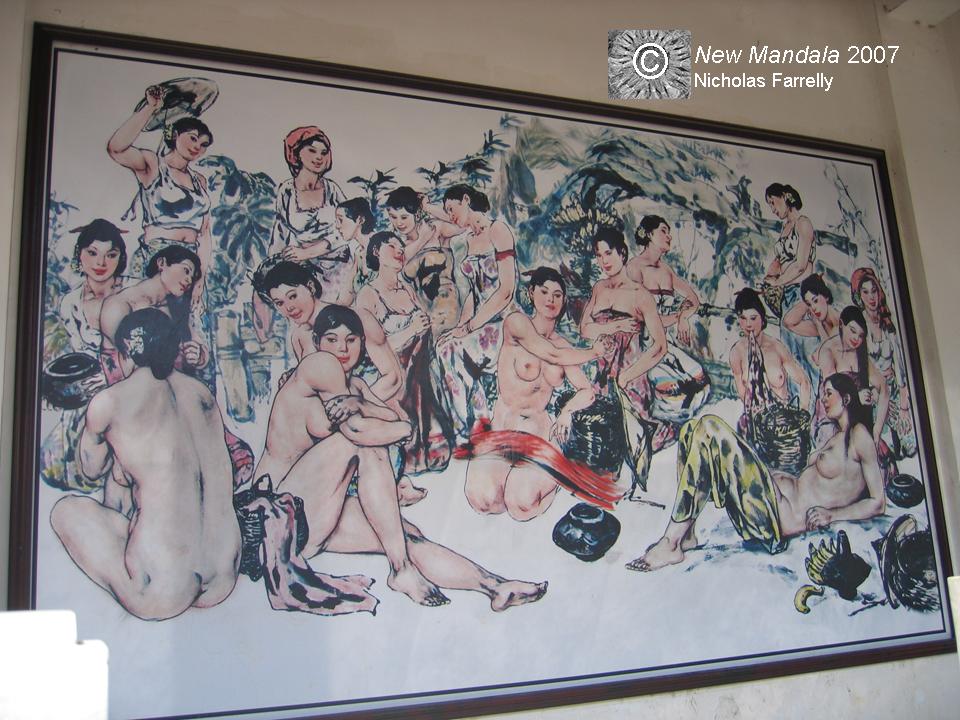
I have more photographs of the murals but this is an indicative selection of their style and content. Huge energy has obviously been expended in the creation of these interesting artworks.
As always, comments and ideas from New Mandala readers are very welcome.
 Facebook
Facebook  Twitter
Twitter  Soundcloud
Soundcloud  Youtube
Youtube  Rss
Rss 